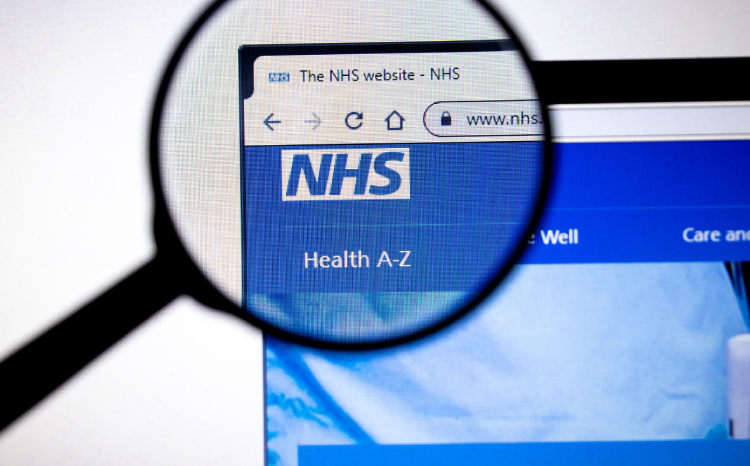Game on for patient online
- 3 April 2014

Providing patients with online access to their GP records is one of health secretary Jeremy Hunt's flagship IT promises; and one that is due to be achieved before the next general election.
However, following the release of a report, 'Patient Online: The Roadmap', by the Royal College of General Practitioners a year ago, things seemed to go rather quiet. For some months, there has been little news on how this target might be be achieved on the ground.
Dr Peter Short, the national clinical lead for general practice at the Health and Social Care Information Centre, acknowledges an "apparent hiatus" in work on the Patient Online programme.
But he says concrete steps are being taken to ensure general practices are supported to start interacting digitally with their patients by next March.
He tells EHI that a lot of this has been focused on replacing the GP Systems of Choice contract, which funds 75% of GP IT systems in England.
A new GPSoC framework came into force this week and changes the way in which information held in the GP record can be made available to those who need it. Increasingly, this means people who want to use information to enable patients to access and use new, digital services.
The contract will, for the first time, fund patient facing services and encourage suppliers to increase their uptake by both practices and patients.
“Come April, for the first time, we have the recognition that patient online services are now regarded very much as part of the core offering from GPs,” says Dr Short.
The contract also creates the opportunity for subsidiary suppliers to be centrally funded to provide these services which, in principle at least, should create competition and encourage innovation in the market.
“The new funding model is not just for providing a service. It is much more about payment by usage, so we’re anticipating that this competitive edge will deliver on what’s required from the ‘patient online roadmap’, which is to have a patient centric design principle,” Dr Short says.
Mapping the road ahead
The Department of Health and NHS Connecting for Health commissioned a strategy document from the RCGP to bring together various stakeholders and work together on introducing patient online. The resulting ‘roadmap’ was published in March last year.
However, the deployment phase of the project never materialised; and both bodies have since significantly changed or, in the case of NHS CfH, vanished.
“From my perspective as a clinician [the roadmap] was a very interesting step to take because it managed to introduce a variety of different stakeholders in a co-operative way to all contribute to solve problems and start to point out where work still needed to be done,” says Dr Short.
He adds that the programme has moved on in terms of its aspirations and some of its terminology since the roadmap was released. Now it is “very much focused on the strapline ‘patients online’.”
“There are a lot of elements within this, but it’s essentially around utilising digital interaction between the patients and the services on a two-way basis to build on the trust we have got and enhance it."
Dr Short says Patient Online is an enormous focus for change and it is necessary to have individual targets within the wider movement. Key to this is the new GP contract which specifies the minimum that GPs must offer in terms of patient access by March 2015.
All must offer patients appointment booking and ordering of repeat prescriptions online, as well as access to the information held in their Summary Care Record.
The minimum agreed in the GP contract will not deliver fully on what Hunt has promised, but Dr Short argues that practices do not strive to deliver the minimum in their contracts.
“We are all aware of what has been put down in the contract for next year, but we’re also well aware that the contracts are there for a purpose, to define contractual minimums. My experience is that GPs don’t deliver the minimum services, they tend to do way above that,” he says.
Potential bumps along the way
Discussions are ongoing with NHS England, the HSCIC, BMA and RCGP about what set of information held in the GP record is reasonable, useful and safe for patients to access.
The roadmap turned up some “not insignificant challenges”, many of which still need to be worked through. These include third party information being in the record.
However, Dr Short argues that there has been a change in attitude amongst the profession to look harder at solving these issues in order to make patient access a reality. He believes GPs have gone from being deeply sceptical to recognising this is an opportunity to change the way they interact with patients, for the better.
“That ongoing interaction is a key reason why many of us have confidence that we will get a useful result out of it that’s workable and acceptable to GPs,” he says.
Top of the list of GP concerns is workload. They do not want to introduce anything that will increase patient demands on their practice as these are already at unprecedented levels.
Dr Short says the aim is for Patient Online to ultimately reduce workload as patients take on more responsibility themselves. For example, far fewer will need to ring surgeries to get test results or book appointments.
But this cannot be promised from day one. The key will be to learn from the new ‘accelerator sites’ about how to achieve the best results.
A “couple of dozen” practices have been recruited as accelerator sites, ranging from long-time enthusiasts for patient access to those that have not even started the journey. They will be mentored and supported to develop their patient online services by NHS England and the HSCIC.
Dr Short says the aim is to “not reinvent the wheel 8,000 times” – referring the number of general practices in England – but to use the lessons learned from the accelerator sites to help others.
The plan is to publish updates regularly on a website, rather than running a pilot and publishing the results years later when it is too late to learn from it.
“People [should get] a pick and mix opportunity to say ‘I like this or that idea’,” he explains. “Some of the lessons will be challenging; we will learn about areas that are difficult to solve – but we have to address those.”
The accelerator sites will be backed up by a group of ten clinical champions who have experience of patient online interaction and will work in the role for one day a week.
What defines success?
Dr Short believes that the key to getting patients involved in online access is for the GPs themselves to suggest and promote the idea to them as benefiting their care.
“Records access is a success when it builds on a clinical relationship and goes on to enhance that,” he says.
His ambition is that digital interaction between a practice and its patients becomes part of ‘business as usual’ and supports patients to self-care.
The Patient Online team is working with the BMA to ensure as few practices as possible “push themselves to the wire” in terms of getting the minimum services in place by March 2015. “We will try to make it as easy as possible to deliver in terms of that contract,” Dr Short says.
“The rate of implementation in practices we know will be different, but by the end of this year patients being online with a general practice should be almost universal throughout England. That would be a fundamental step in the right direction.”




